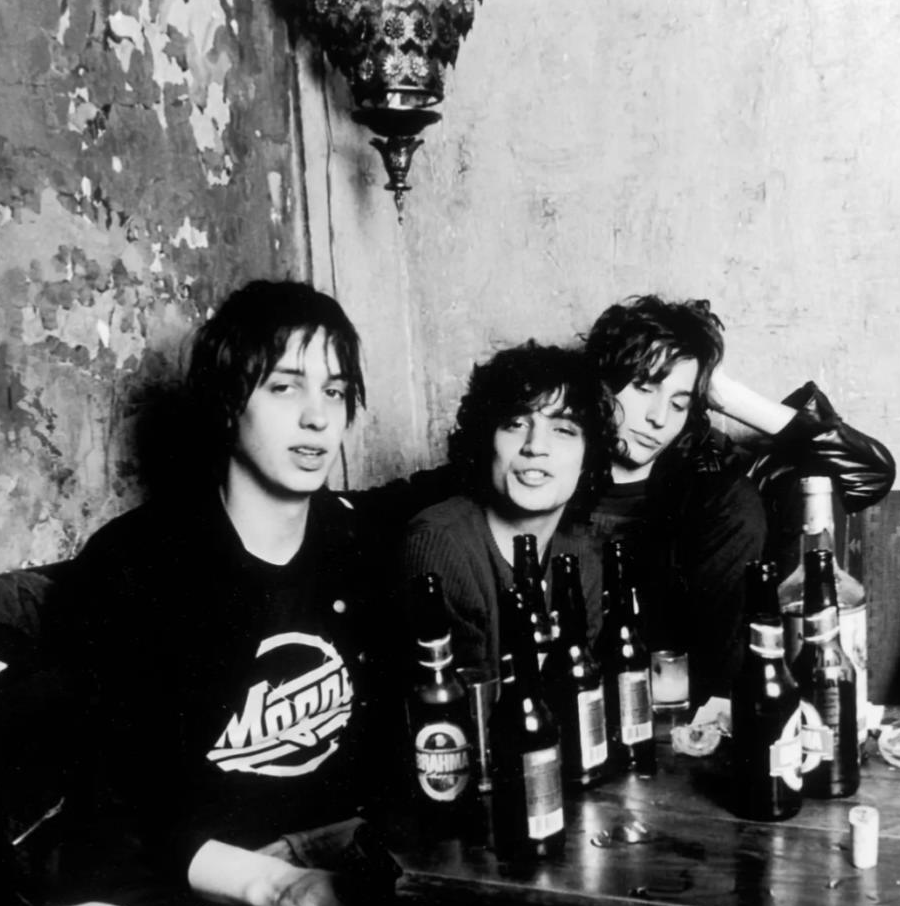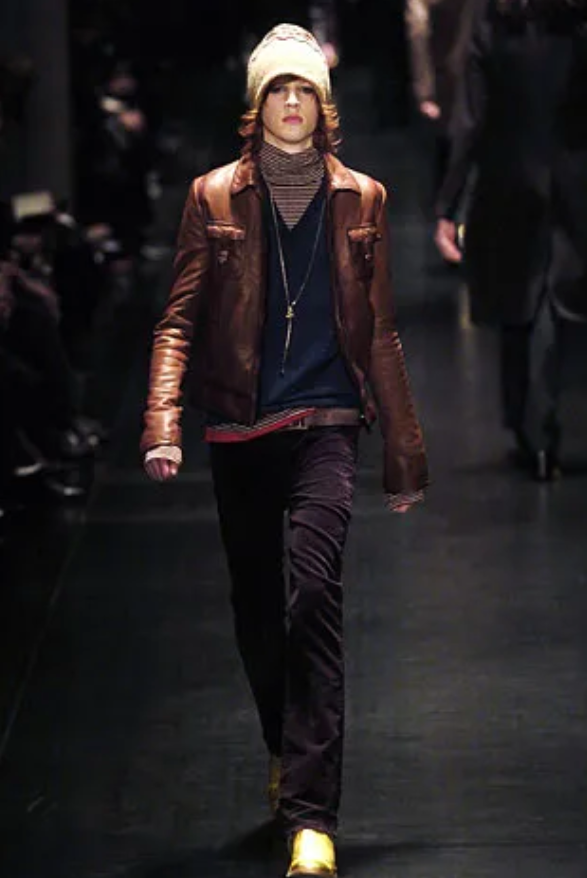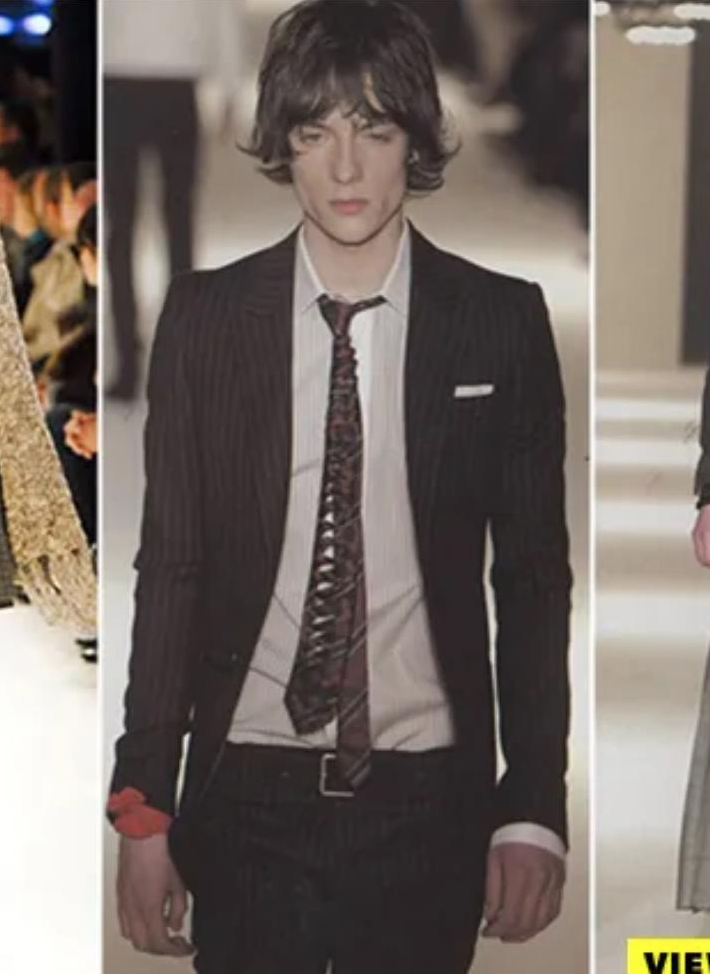The Strokes: 00s Garage Rock Revival & Its Influence on Music and Fashion
The 2000s garage rock revival is said to be one of the last eras where rock was considered “cool” in the eyes of the mainstream. Starting with the phenomenon that was The Strokes’ debut album Is This It, the garage rock revival began. The critically acclaimed album not only topped the charts and had a few huge hits, but it also inspired an entire generation of rock bands. After the release of their first album, a plethora of The Strokes’ predecessors jotted the band down and their album as huge inspirations with acts like Arctic Monkeys, Franz Ferdinand and The Killers being very obviously inspired by the band.
“I just wanted to be one of The Strokes, now look at the mess you made”
The term ‘garage rock revival’ is quite self-explanatory; a modernized take on Garage Rock and other genres such as ‘art rock’ from the 60s. With bands like Velvet Underground and The Stooges being some of the biggest names under those subgenres. Garage rock is said to be one of the major influences of early punk rock acts which made the OG genre-less polished and more rambunctious. This later turned into Grunge (Seattle Sound) that gave us bands like Soundgarden and Nirvana which created an even more eclectic sound. It wasn’t until the early 2000s that the original sound came back from obscurity.
Source: Rolling Stone
After the passing of Kurt Cobain in 1994 and Seattle Sound being mimicked by bands all over the United States, rock in the mainstream came to a screeching halt. Being replaced by boy bands and bubblegum pop stars- it seemed like there was no place for rock bands. Now don’t get me wrong, rock was still huge in the mid to late 90s with bands like Green Day, Blink-182, and Limp Bizkit having very successful hits, but rock wasn’t “cool.” The rockstar turned into the “stoner skater” archetype with Blink-182 and Sum 41 being huge influences on skater culture or the metalhead like Korn. That was until 2001 when a group of private school kids from Manhattan made starting a local band with your friends cool once again.
After their debut breaking into the mainstream, a similar domino effect that happened with Seattle Sound, happened in Manhattan. Similar to the bands a part of the same underground scene as Nirvana getting signed to major labels just because they were from Seattle, bands including The Hives, The White Stripes, and Yeah Yeah Yeahs were all put under this label of “Garage Rock Revival.” They had huge hits due to just being from Manhattan or having the “right sound” at the right time.
It is a known fact in the music industry that critics tend to celebrate bands that emulate the “golden age of rock” aka the 60s to the 70s. To the point that in 2004 The New York Times created a term called “Rockism,” idolizing the authentic old legend while hating the latest pop star, lionizing pop-punk and barely tolerating disco. So, it is no secret that 00s Garage Rock benefitted from the fact that critics hated Nu-Metal and Pop Punk.
fashion
Having a familiar sound to past artists isn’t the only reason why these bands were so successful, their fashion choices played a huge role in their personas as well. Especially The Strokes who are said to have even changed men’s fashion for the better by many fashion critics. Suddenly it was “cool” to go vintage shopping. It was hip to wear fitted leather jackets with vintage graphic tees and skinny ties. The androgynous look was once again synonymous with the rockstar.
Source: The Strokes
Hedi Slimane, who was the creative director for Dior Homme during 2001 to 2007 alongside The Strokes are known today for changing menswear trends and making the slim-cut silhouette cool again.
Source: Dior
“To be truly iconic you need to be recognizable in silhouette”
Think of how Punk, although a very broad term, has a set look that has been attached to the subgenre since the 70s. Then, later subcultures such as Goth and Emo became very vital and influential parts of pop culture throughout the decades. Nick Valensi, lead guitarist of The Strokes, solidified the band’s look by telling Julian Casablancas, lead singer and songwriter, “What’s your problem? Just dress every day like you’re going to play a show.”
“If you set the Strokes at one end of the spectrum with their mélange of thrift store cool and Interpol at the other with their more formalized look, their contemporaries tend to fit somewhere in between.”
Source: The Strokes
Cons
On top of a great sound and fashion sense, members of these bands seemed to live the lives of true rockstars, taking “Sex, Drugs, Rock & Roll” very literally. There is an insightful book named Meet Me in the Bathroom by Lizzy Goodman that dissects the NYC alternative rock scene of 2001-2011. Also included is quite a bit of eyewitnesses and interviews from the bands themselves that discuss what the NYC underground music scene was truly like.
While this may seem like they were promoting unhealthy lifestyles, they were just truly living these stereotypes. In an interview, Albert Hammond Jr., guitarist of The Strokes, spoke about the major drug addiction he had that ran from 2003 to 2009 where he would spend about 1,000 dollars a night on heroin and cocaine.
The Garage Rock Revival, although aesthetically and sonically an extremely iconic and influential era, was a product of its time. Rock fans today tend to want their favorite band members to be role models for the younger generations, therefore, making the tendencies of these band members a nightmare for parents and even some fans who think the members were trying “too hard” to be cool. There was also a severe lack of representation in the subgenre, with barely any people of color or women part of the popular bands.
Although there were quite a few cons to this era, the legacy of these bands still lives on today. The popular pop-rock band Wallows in multiple interviews have cited The Strokes and Arctic Monkeys as major influences. As well as the future SLP (Saint Laurent Paris) look that took over men’s fashion throughout the 2010s due to Hedi Slimane being the creative director for Saint Laurent from 2012 to 2016. Now that Slimane is under Celine, it’ll be any day now where everyone is once again dressing like NYC rockstars from the early 00s.
Since pop-punk is becoming a part of pop culture once again and Y2K aesthetics are the new norm, do you think there will be a 2020’s garage rock revival? Leave a comment below.





